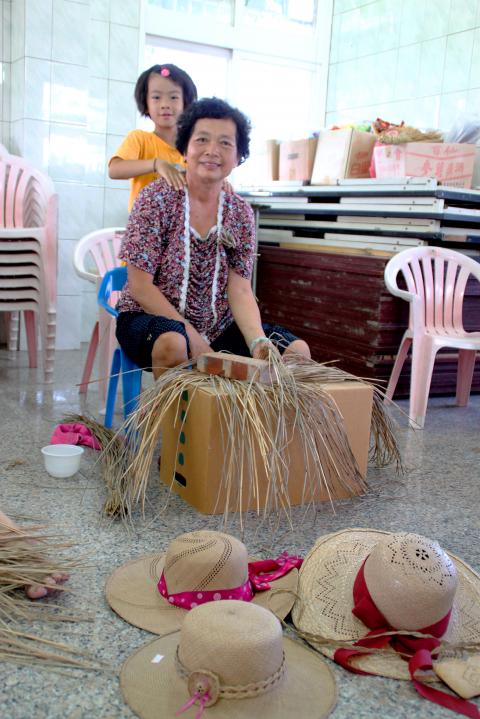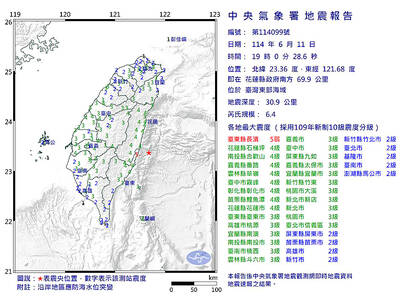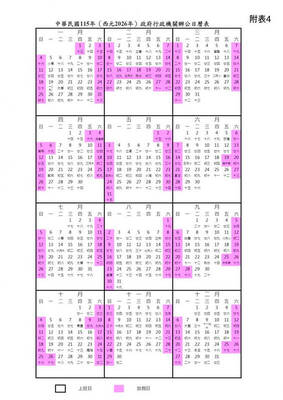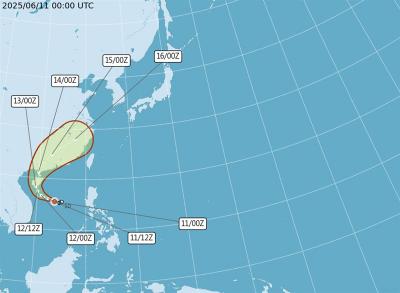Sitting next to a temple in Longcyuan Borough (龍泉) in Greater Taichung’s Dajia District (大甲), a group of middle-aged women twist strands of triangle rushes together to form a variety of items — once a booming craft that is quickly disappearing.
Thriving on the wetlands along the Daan River that flows through Miaoli County and Taichung, rushes have been at the center of a unique weaving culture in the district.
According to local farmers, the fragrant plant is harvested three times a year. Each harvest produces rushes with different uses and prices.

Photo: CNA
Rushes reaped in the third and the fourth months of the lunar calendar are called “spring grasses,” which are dried in the sun until they develop a golden color.
Rushes gathered in the first harvest season are subject to color fading, and their relatively low price makes them particularly well-received among practitioners of the time-honored weaving craft.
The triangular plants picked during the second harvesting season, in the seventh and eighth months of the lunar calendar, are ideal for the manufacture of hats and mats because the fibers are shorter and more resilient. The price, on the other hand, tends to be higher.
With a shorter and thinner stem, rushes harvested in the 10th month of the lunar calendar are only suitable for smaller items such as name-card holders.
Chatting with her fellow weavers, Chiu Shu-tzu (邱淑子) from the district’s Sici Borough (西岐) sighed about the decline of the once prosperous rush weaving industry.
“Whether it is in [Taichung’s] Dajia District or [Miaoli’s] Yuanli Township [苑裡], the majority of women who have mastered the weaving skills are already in their 60s. For a day of hard work, weavers are only rewarded with a salary of between NT$200 and NT$300,” Chiu said.
During the summer, as rushes dry out quickly because of the ever-increasing temperature and become vulnerable to breakage, weavers cannot turn on an electric fan and they swelter in the heat while working.
When taking on a large woven piece, senior craftspeople have to sit on the ground in a stooping position for several hours, which often causes backaches.
Because of the low pay-to-effort ratio, many of their family members have urged them to retire from the waning industry.
Accompanied by her granddaughter, who from time to time gives her grandmother a massage to ease her back pain, an elderly woman surnamed Chen (陳) from Longcyuan Borough lamented the decline of the traditional craft.
“People are calling for the preservation of the rush weaving culture, but weavers can barely survive on the meager salary. Youngsters nowadays refuse to stay in their hometown, and an old woman like me can only do odd jobs to make a penny,” Chen said.
However, when the weaving industry was in its heyday, things were different. Back then, both women and men were eager to join the weaving industry, as the paycheck was enough to raise a family of six. Woven hats and mats were deemed one of the three treasures, along with the Jheng-lan Matsu temple and butter pastries, in the district.
Dajia District’s Sishihai Promotional Association chief executive Kuo Su-yueh (郭素月) said that while the association had been calling on women in Longcyuan Borough and Jiansing Borough (建興) to pass down the craft to the younger generation, they could hardly continue their endeavors without the government’s support.
“The efforts of our association have been unrelenting. The government should put more emphasis on preserving the weaving culture, or the Dajia [rush-woven] hats and mats could become nothing more than a memory,” Kuo said.
Greater Taichung Bureau of Cultural Affairs director-general Susan Yeh (葉樹姍) said that young people’s reluctance to enter the weaving industry was the greatest obstacle in keeping weaving skills alive.
“The bureau has introduced a rush weaving training course in the past, but only a handful of people actually signed up for the class. With the dwindling number of people making a living through weaving in Dajia District, the industry no longer receives enough support and that is our biggest obstacle,” Yeh said.
As part of his individual effort to boost the declining industry, Democratic Progressive Party (DPP) Legislator Tsai Chih-chang (蔡其昌) said he takes several rush-woven name-card holders with him on overseas visits as gifts for his foreign acquaintances.
DPP Greater Taichung Councilor Wu Min-ji (吳敏濟) said that aside from putting effort into promoting mainstream culture, the cultural bureau should also focus on the training of handicraft talents in local districts.
“Only with systematic support, an effort to solidify community consciousness and the incorporation of cultural creativity by the administrative branch can the past glory of the Dajia rush [weaving culture] be restored,” Wu said.

A magnitude 6.4 earthquake struck off the coast of Hualien County in eastern Taiwan at 7pm yesterday, the Central Weather Administration (CWA) said. The epicenter of the temblor was at sea, about 69.9km south of Hualien County Hall, at a depth of 30.9km, it said. There were no immediate reports of damage resulting from the quake. The earthquake’s intensity, which gauges the actual effect of a temblor, was highest in Taitung County’s Changbin Township (長濱), where it measured 5 on Taiwan’s seven-tier intensity scale. The quake also measured an intensity of 4 in Hualien, Nantou, Chiayi, Yunlin, Changhua and Miaoli counties, as well as

Taiwan is to have nine extended holidays next year, led by a nine-day Lunar New Year break, the Cabinet announced yesterday. The nine-day Lunar New Year holiday next year matches the length of this year’s holiday, which featured six extended holidays. The increase in extended holidays is due to the Act on the Implementation of Commemorative and Festival Holidays (紀念日及節日實施條例), which was passed early last month with support from the opposition Chinese Nationalist Party (KMT) and Taiwan People’s Party. Under the new act, the day before Lunar New Year’s Eve is also a national holiday, and Labor Day would no longer be limited

COMMITMENTS: The company had a relatively low renewable ratio at 56 percent and did not have any goal to achieve 100 percent renewable energy, the report said Pegatron Corp ranked the lowest among five major final assembly suppliers in progressing toward Apple Inc’s commitment to be 100 percent carbon neutral by 2030, a Greenpeace East Asia report said yesterday. While Apple has set the goal of using 100 percent renewable energy across its entire business, supply chain and product lifecycle by 2030, carbon emissions from electronics manufacturing are rising globally due to increased energy consumption, it said. Given that carbon emissions from its supply chain accounted for more than half of its total emissions last year, Greenpeace East Asia evaluated the green transition performance of Apple’s five largest final

The first tropical storm of the year in the western North Pacific, Wutip (蝴蝶), has formed over the South China Sea and is expected to move toward Hainan Island off southern China, the Central Weather Administration (CWA) said today. The agency said a tropical depression over waters near the Paracel and Zhongsha islands strengthened into a tropical storm this morning. The storm had maximum sustained winds near its center of 64.8kph, with peak gusts reaching 90kph, it said. Winds at Beaufort scale level 7 — ranging from 50kph to 61.5kph — extended up to 80km from the center, it added. Forecaster Kuan Hsin-ping